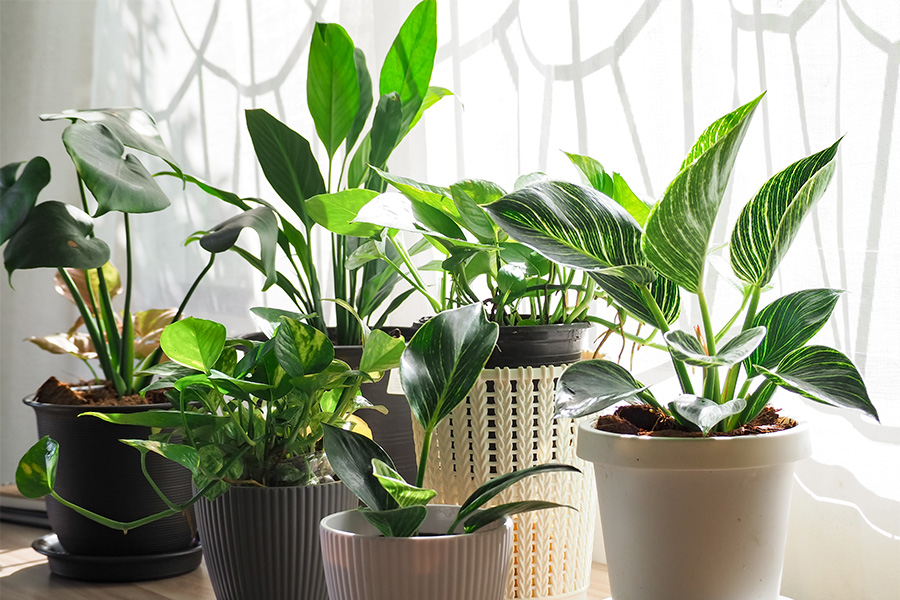Horticulture
-

B 1277
Water Quality Assessment
The Greenhouse*A*Syst series of publications is a confidential self-assessment program you can use to evaluate your greenhouse business for risks associated with water management issues. Armed with facts and figures, you will then be able to reevaluate your management strategies and determine ways to conserve water and minimize those risks. By following the guidelines, you will be able to establish a formal companywide water conservation plan. Implementation of this plan will facilitate more efficient use of resources and impart significant savings in water use, fertilizer and pesticides. This publication will help you determine your water quality and help you develop a management plan to monitor your water quality.
Bodie V. Pennisi
|
-

The Greenhouse*A*Syst series of publications is a confidential self-assessment program you can use to evaluate your greenhouse business for risks associated with water management issues. Armed with facts and figures, you will then be able to reevaluate your management strategies and determine ways to conserve water and minimize those risks. By following the guidelines, you will be able to establish a formal company-wide water conservation plan. Implementation of this plan will facilitate more efficient use of resources and impart significant savings in water use, fertilizer and pesticides. This publication will help you assess the feasibility of water reclamation and recycling in your operation.
Bodie V. Pennisi
|
-

The Greenhouse*A*Syst series of publications is a confidential self-assessment program you can use to evaluate your greenhouse business for risks associated with water management issues. Armed with facts and figures, you will then be able to reevaluate your management strategies and determine ways to conserve water and minimize those risks. By following the guidelines, you will be able to establish a formal company-wide water conservation plan.
Implementation of this plan will facilitate more efficient use of resources and impart significant savings in water use, fertilizer and pesticides. This section will help you develop a plan to
conserve water resources and establish a company policy. It will also ask you to become more aware and involved in local water use legislation. By completing this section, you will reduce the risk of being caught off-guard by water shortages due to legislative and social issues in your community.Bodie V. Pennisi
|
-

This diagnostic system is designed as a tool to assist growers, Extension specialists and county agents to diagnose problems with ornamental crops. The document consists of six major sections and five appendices. Each section is designed to supply information on various important aspects of the crop under scrutiny.
Bodie V. Pennisi
|
-

This publication is the second in a series focusing on irrigation scheduling for vegetable crops. It contains basic guidance on water use and irrigation management for Brassica crops such as cabbage, leafy greens, broccoli, and cauliflower, and this information should assist growers in scheduling irrigation.
D. Scott Carlson, Timothy Coolong, Laurel Dunn, and Andre Luiz Biscaia Ribeiro da Silva
|
-

Interior plants are an ideal way to create attractive and restful settings while enhancing our sense of well being. In addition, houseplants can be a satisfying hobby and can help purify the air in our homes. To be a successful indoor gardener, you need to understand how the interior environment affects plant growth and how cultivation differs from growing plants outdoors.
Bodie V. Pennisi
|
-

Container gardening has enjoyed an increased popularity in the last decade. With increased urbanization, container gardens have come to the rescue to brighten up patios and balconies. This publication is intended to provide information on successful gardening in containers using tropical plant materials.
Bodie V. Pennisi
|
-

This publication is designed to give small market growers, homeowners, and Master Gardener audiences a quick guide to selecting and installing drip irrigation in the vegetable garden.
Bob Westerfield
|
-

Trap crops are sacrificial plants that can draw damaging insects away from valuable crops. Small-market growers, as well as homeowners, are experiencing greater pressure to produce quality vegetables due to increasing insect activity. There is also concern among both growers and the public about environmental sensitivity. This publication introduces the effective and environmentally friendly use of trap crops as an alternative to controlling damaging insects in the vegetable garden.
S. Kris Braman and Bob Westerfield
|